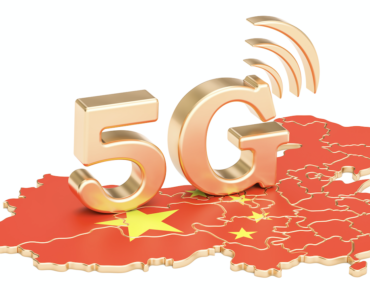Coronavirus Seen Slowing 5G Deployments

The unrelenting spread of the coronavirus is endangering global electronics supply chains, raising the possibility that planned 5G wireless deployments could be at risk.
The rollout of key components such as next-generation 5G New Radio has begun. Global availability remains limited, analysts note, and could be slowed further if the virus forces key electronics manufacturers in China to slow production. For now, the supply of semiconductors destined for 5G devices remains steady, according to market tracker Omdia.
“If coronavirus continues to spread and spur significant public health problems in China, electronics manufacturers in the country may be forced to slow manufacturing or even shut down some operations,” Omdia warned this week. “This could have a significant impact on global semiconductor supply.”
The threat of production shutdowns in China is especially worrisome given global dependence on 5G leaders like Huawei for next-generation wireless infrastructure such as base stations and 5G radio access network equipment. Prior to the coronavirus outbreak, market analysts were forecasting a $21 billion market for 5G networking gear by 2024.
Those estimates have now been tempered by disruptions to the global electronics supply chain caused by the epidemic.
“If there is a deceleration in manufacturing within China, it is likely to not only impact chip suppliers but also companies that purchase large volumes of chips to produce end products,” including providers of electronic manufacturing services and original design manufacturers, Omdia warned.
An early indicator of 5G supply chain disruptions is the current decline in display manufacturing. Analysts estimate display manufacturing will decline by as much as 25 percent during February as component shortages begin to bite. Display manufacturing resumed on Feb. 3 after the government extended the Lunar New Year holiday, but travel restrictions have slowed the return of workers.
Another disruption to the 5G rollout occurred this week with cancellation of Mobile World Congress, the largest global wireless trade show that was scheduled for the end of February.
Other market trackers view the coronavirus as a potential use case for 5G technology. Analysts note that the expansion of bandwidth capacity on 5G networks could be used for remote health care applications.
“Remote healthcare requires real-time, high-quality video conferencing among other things, which today generally requires wired networks,” Frost & Sullivan notes. “While this use case is often discussed to improve rural healthcare, an epidemic such as COVID-19 illustrates another [instance] when doctors and their patients may be remote from each other.”
Given current travel restrictions across China, “doctors may be able to treat a larger number of patients remotely,” the analyst said.
Related
George Leopold has written about science and technology for more than 30 years, focusing on electronics and aerospace technology. He previously served as executive editor of Electronic Engineering Times. Leopold is the author of "Calculated Risk: The Supersonic Life and Times of Gus Grissom" (Purdue University Press, 2016).











